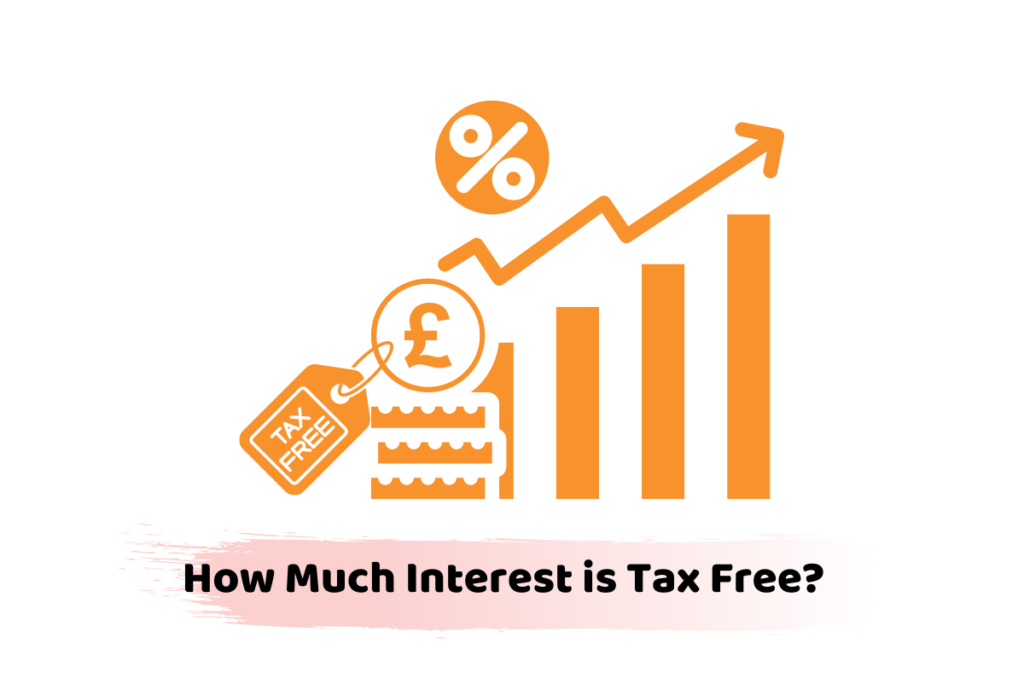In the UK, many people are likely to pay higher taxes on their tax-free interest income due to a lack of knowledge and availability of poor information. If you’re also one of those folks who are earning interest on their savings and wish to know how much interest is tax-free, this informative blog is just for you.
These taxes could be a heavy drain on your interest income and you can lose your savings in the form of taxes. Luckily, there are many people earning interest without paying a single penny in tax. In other words, their interest income is completely tax-free. Continue reading this blog to find out if your income is also tax-free. So, let’s dive in!
Accotax is equipped with a team of experienced tax professionals and accountants to help you out. For more information about tax-free interest income, feel free to call us now!
What is Savings Interest and How Much Interest is Tax-Free?
The cash you hold is not liable to tax. However, if you receive cash in the form of interest on your savings, then you might have to pay taxes, under certain conditions.
Typically, the savings interest is paid in gross, without any tax deduction at source such as banks. A person can pay tax on interest income when he receives interest income, and not when he has earned it.
On the other hand, the three primary determinants of tax-free interest income are the Personal Allowance, Starting rate of savings and personal savings allowance. Let’s discuss each of them one by one.
HMRC charges no tax on the following types of income:
- Saving interest such as from banks and building society etc.
- Dividend Income
- Income from Self-Employment, known as a trading allowance, is equivalent to £1,000
- Income from rented property, unless it falls in the category of Rent a Room Scheme.
In this blog, we’re going to restrict our discussion to savings interest only.
Personal Allowance for Tax-Free Interest Income
When it comes to considering how much interest is tax-free, we can talk about the allowances that are applicable every year. But the amount you will receive in allowance depends on your income in a tax year (6 April-5 April). The tax amount depends on the amount of income beyond the Personal Allowance and within given tax bands.
The personal allowance, £12,570, is completely tax-free. However, the amount of personal allowance could be increased or decreased in certain cases: For example, the tax-free income can be increased by:
In another case, personal allowance could be decreased from the standard amount of £12,570, which is:
- Income level is beyond £100,000
One important point to remember here is that personal allowance does not apply to an income of more than £125,140. If your interest income is less than or equal to personal allowance then it is tax-free. Otherwise, the standard tax rates become effective if income is beyond the personal allowance. For example, basic-rate taxpayers pay a tax of 20%, higher-rate taxpayers of 40%, and additional-rate taxpayers of 45%.
Starting Rate for Savings for Tax-Free Interest
The starting rate of savings after knowing how much interest is tax-free, is £5,000. If you earn higher interest from other income, the less will be the starting rate for savings. For example:
If you earn income over £17,570 (Addition of Personal allowance of £12,5270 and starting rate of savings of £5,000), then the tax applies to income beyond this level (£17,570).
- Suppose, you earn £15,000 in wages and get £100 in interest income.
- The total income would be £15,100.
- The personal allowance of £12,570 is taken away from total income to calculate the taxable interest income.
- The remaining amount ( £15,100- £12,570 = £2,530) reduces the starting rate of savings by ( £5,000 – £2,530 = £2,470).
- It means the interest income of £100 is not taxable.
- The starting rate of savings is reduced by £1 for every £1 earned in non-saving income.
Personal Savings Allowance
A personal saving allowance of £1,000 is tax-free and you can get this by knowing your income tax band. As the tax band increases, the personal saving allowance decreases. The basic rate taxpayers get £1,000 Personal savings allowance. A higher rate taxpayer will get a personal allowance of £5,000 while additional rate taxpayers will receive no personal savings allowance.
Types of Savings on Which Savings Allowance Applies
HMRC has categorised the savings on which savings allowance will be applicable.
- bank and building society accounts
- savings and credit union accounts
- some life insurance contracts
- unit trusts, investment trusts and open-ended investment companies
- peer-to-peer lending
- life annuity payments
- trust funds
- payment protection insurance (PPI)
- government or company bonds
The exception applies to tax-free accounts such as Individual Saving Accounts (ISAs) and National Savings and Investments. Furthermore, the interest is divided equally between account holders of a joint account. Apart from this, you will pay the usual rate of income tax if interest income is above your allowance. In this particular case, HMRC will change your tax code and the tax deduction will be automatic. For self-assessment tax returns, you will declare your interest income yourself.
Conclusion
Finally, we can conclude the discussion that you can save on your savings by getting to know about personal allowances, starting rate of savings and personal saving allowances. Lastly, your tax-free savings depend on the level of annual income you earn. After learning about how much interest is tax-free, you can enjoy your journey of savings without any deductions, given your taxable income is not over £17,570.
Get in touch with our qualified team of tax consultants to seek assistance in your effective taxation management. We will ensure to provide instant help. Give us a call now!





















































